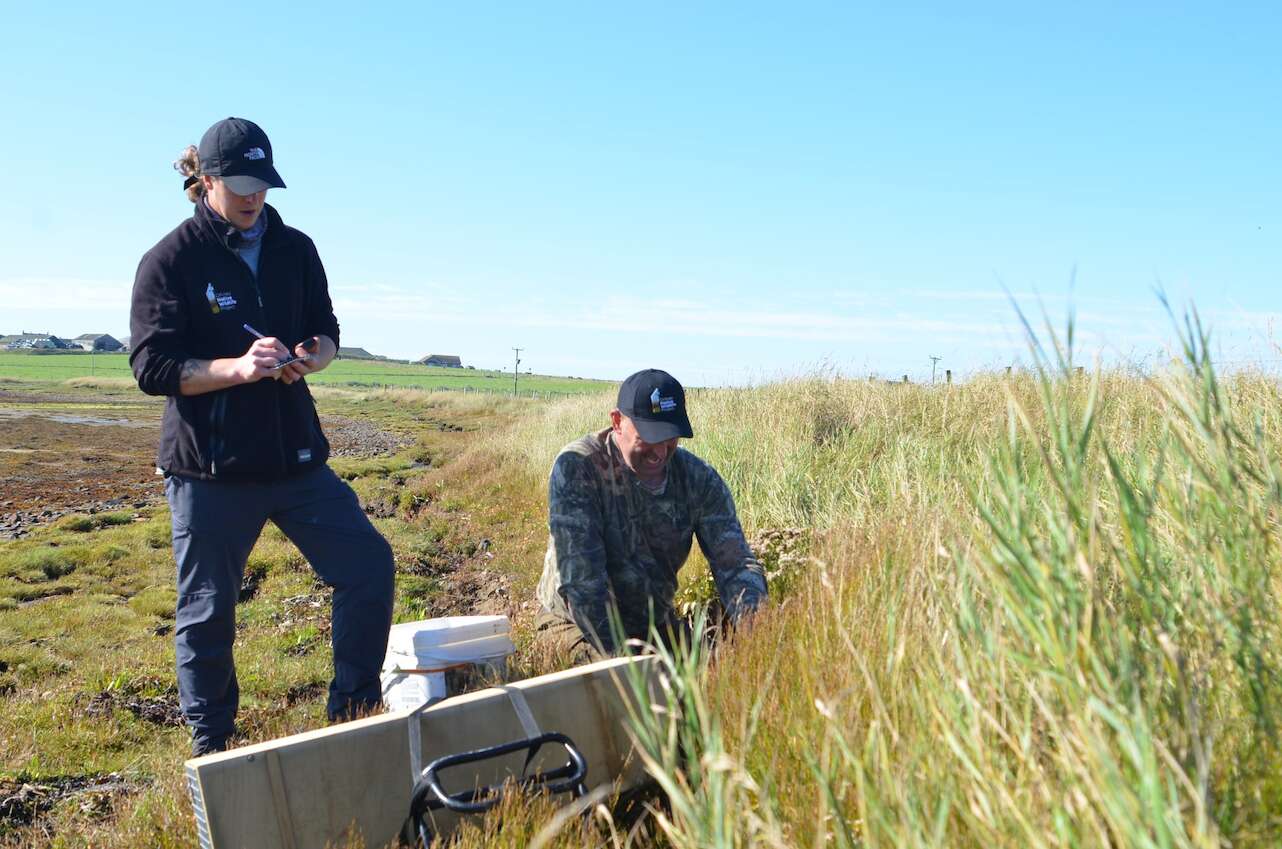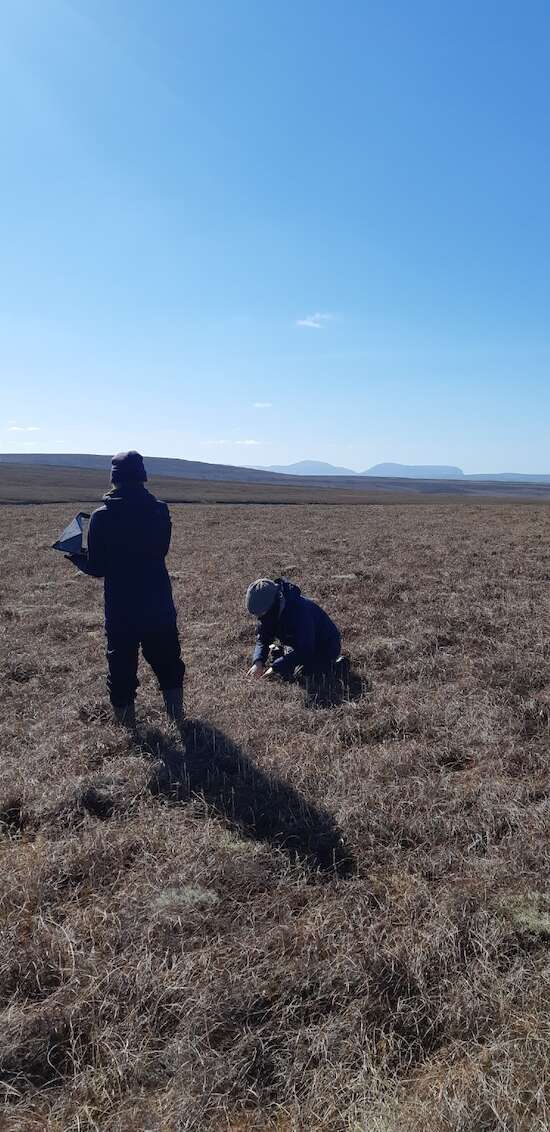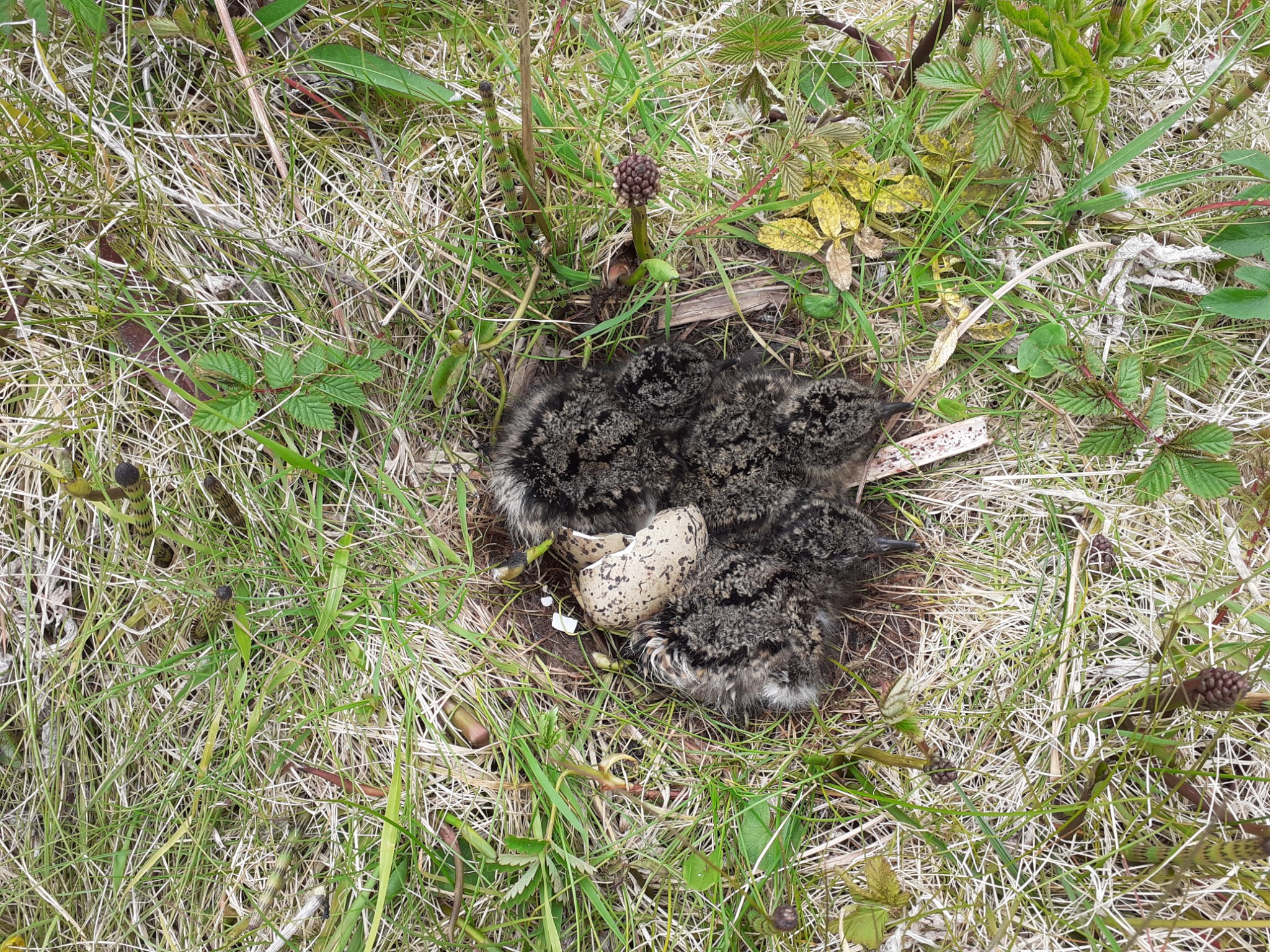Milestone reached
This month we passed a milestone recording 2000 stoats removed from Orkney Mainland. Quite a landmark supported by landowners providing land access, and all the community stoat sightings.

It certainly makes a difference being able to catch up on the time lost due to the covid pandemic. Catching up after covid means we are looking for trappers to join our eradication team. If you are physically fit and want to work as part of the team regularly checking the 6234 trap boxes in the field and responding to community stoat sightings, then follow the link for more information and how to apply by the closing date of 3 October 2021.
Monitoring waders in all terrains
This month we follow up with part two of an inside look on the project’s wildlife monitoring work as we keep an eye on wader productivity. We have 16 sites across Orkney Mainland, Egilsay, Sanday and Papa Westray concentrating on lapwing, curlew and oystercatcher. The first lapwing nests can be found from the end of March, unfortunately this season a large proportion of these early nests were abandoned in the cold and snow at the start of April; the birds couldn’t afford to sit tightly on their nests and not be feeding regularly during this time. The cold wind also meant the eggs chilled much quicker each time the adult bird did leave the nest.

The Research Assistants monitor three sites each with the others covered by the RSPB Scotland reserves team and a couple of our fabulous volunteers. Helen Pruzina, Research Assistant 2021, tells us more:
“Monitoring wading bird productivity, at the start of the season involved observing birds' behaviour to map territories and then using binoculars and telescopes to scan the site vegetation for any nests. This is a challenge of varying difficulty: lapwing and oystercatcher, black and white and sitting proudly with their tails up in the short vegetation can be fairly easy to spot, but curlews are well camouflaged in long brown vegetation. Redshank and snipe are even harder. They make a cosy house for themselves deep within a tussock, so that it was often only by accidentally flushing them that I found a nest at all. Motion-triggered cameras were placed on as many nests as possible, to observe predator species or confirm hatching. Although the cameras produced some lovely close-up shots as well as vital data, it can be a nerve-wracking task tiptoeing around the tussocks with a terror of stepping accidentally on a nest. As if a tiny clutch of perfectly camouflaged lapwing eggs isn’t delightful enough, the latter part of the season is mainly dedicated to following the fate of each brood. We monitor to get a measure of post-hatching survival chances. Wader chicks are by nature nest-fleeing young. They are capable of tottering around on ludicrously spindly legs and feeding themselves within a few hours of hatching. In the early stages they look much like mottled brown pom poms on sticks, and it was a joy to watch some of them right through to the point they fledged when their sturdy, waterproof adult feathers coming through gradually as they grew.”
Overall, 2021 was a great success for monitoring. The Research Assistants were an amazing team. They were always so enthusiastic and hardworking, keen to get the job done despite the challenges along the way. Between them the ONWP team found 262 wader nests. This isn’t the total number of sites as RSPB Scotland and volunteers also monitor their own. The ONWP completed many more bird surveys, a handful of vole surveys as well as volunteering for seabird surveys later in the year! Two mammoth and critical tasks that are not often mentioned are the data entry and checking the camera footage from monitoring nests and broods. This takes up a lot of their time and the job is more than fun out in the field!
Research Assistant, Ellie Ames, who returned to complete a full season after lockdown halted most of her 2020 monitoring experience describes her season.

“After the challenges of last year, where I didn’t get to do much monitoring due to lockdown, I was excited to return to ONWP as a Research Assistant in 2021 and have a full season in the field! The highlights of the season for me included finding and monitoring 53 nests of lapwing, curlew, oystercatcher, redshank and snipe. I learned a lot more about displaying and nesting behaviour, the kinds of habitat each species likes to nest in, and the difference between hatched and predated eggshells. I got to see chicks of each of these species in the field and on camera and watched as some of them survived to develop and fledge. It’s a tough world out there for a wader chick, with both native and non-native predators to avoid, so it’s a real feeling of success when you know that one of ‘your’ chicks has made it! Whilst I observed a fairly high rate of nest failure on a couple of sites, overall the season seemed quite successful, particularly for curlew with more broods at one site which I covered in 2020. I also enjoyed beautiful early morning bird surveys, getting to explore different corners of Orkney at dawn, and getting up close and personal with the vegetation on the vole surveys! While out surveying I also got to see a variety of Orkney’s other wonderful wildlife including hen harriers, short-eared owls, merlins and great skuas (Bonxies), and a variety of seabirds. I feel very lucky to have had another season in Orkney, it is a beautiful county with so many natural wonders, and I have enjoyed contributing to our knowledge of the fortunes of these important native species.”
If you fancy joining the team for the 2022 season, we will start recruiting in the new year for a March 2022 start.
Sign up, sign up!
We would be super grateful if you could spread the word about our new website and encourage folk to sign up to news updates on how we are protecting Orkney’s unique native wildlife. You can scroll to the bottom of every page on our website to click subscribe to sign up to receive our regular blog. That way you will never miss a thing!
Until our next issue you can keep up with our progress via our Facebook page and our monthly column in the Orcadian newspaper. Any questions please feel free to contact us.

